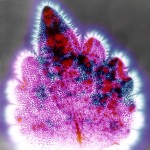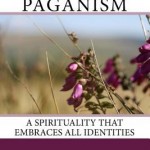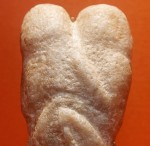There has been a lot of talk about the nature of deities on Patheos Pagan blogs recently – for example an excellent article on Raise the Horns about the way that deities change over the centuries.
This makes sense to me – I am a big fan of process theology, which suggests that the divine changes in response to the world, and I am also a polytheist, so I do not see why deities wouldn’t change too.
The Hindu and Buddhist traditions have deities reincarnating in different avatars. In Buddhism, becoming a deity is not the ultimate aim, as you can always slip down the great chain of being if you transgress as a deity; the ultimate aim is to cease to exist, to rest in Nirvana (which literally means ‘no flame’). There’s a brilliant Hindu story which shows the development of a deity through many lifetimes, Indra and the Ants. In this story, Indra sees a column of ants processing through his palace, and is told that they are all former Indras. He also meets an old man who plucks a hair out of his (very hairy) chest every time an avatar of Indra dies, which signifies the end of an age. What this story tells us about deities is that they too reincarnate, and can grow or diminish in wisdom — in this story, Indra learns something that he did not know before.
There are many different views of how deities relate to each other and to the universe. My personal view (which I offer as one possible view, and not as normative in any way), is that there is an underlying divine energy, which emanates from the divine source. In my view, neither the underlying energy nor the divine source have a personality. From the underlying energy, all beings emerge — humans, spirits, deities, and animals. However, none of these beings are discrete entities — we have fuzzy boundaries and exchange food, energy, and breath with the world around us. Rather, we are distinct entities, and so are the deities. They are affected by our attention, gifts, and communing with them (or lack of it).
I do not think that Thor is the same as Jupiter or Perkunas or Indra or Yahweh the thunder god. They are all thunder gods (that’s their job) and so they are local manifestations of the thunder principle, but they are distinct from each other, just as all web developers share certain characteristics, and may be expressing an archetype when they are doing web development, but are still distinct individuals.
In Neil Gaiman’s novel American Gods, the American manifestation of Odin is called Mr Wednesday, and the American manifestation of Loki is called Low-key Liesmith (good pun). In the novel, deities are expressed differently when they arrive on a new continent (just as there were many avatars of Indra in the story). I like this idea.
I also want to make a distinction here between monism (the belief that the whole universe is composed of the same energy) and monotheism (the belief that it was created by a single deity). Monism is compatible with polytheism; monotheism isn’t.
Lords and Ladies
I think deities emerge from the underlying energy in various different ways. They can be deified humans (such as Quintus Aurelius Symmachus, or Antinous); they can be personifications of natural forces (such as thunder gods, rain gods, and so on); they can be a combination of these (such as Odin, who was both a human king and the god of the winds); or they can be spirits of place who become particularly powerful (such as Athena, goddess of Athens).
In his novel Small Gods, Terry Pratchett describes how a small particle of consciousness floating around in the desert lodges in the brain of a young man, who then becomes its prophet, and founds the religion of Omnianism, with disastrous and hilarious consequences (hilarious because of the resemblance between Omnianism and fundamentalist Christianity, and disastrous for exactly the same reason).
Terry Pratchett has rightly been hailed as Britain’s foremost Pagan theologian, although he is an atheist. If you haven’t read his novels, you’re in for a treat. I especially recommend Small Gods, Pyramids, Equal Rites, Wyrd Sisters, Witches Abroad, Lords and Ladies, Maskerade, Carpe Jugulum, The Wee Free Men, A Hat Full of Sky, Wintersmith, and I Shall Wear Midnight — that should keep you busy for a bit! These are the ones about witches, deities, and faeries. (Pratchett’s faeries are not nice — on the Discworld, stone circles were built to keep them out.)
Equal Rites
Anyway, back to deities, and on to the thorny question of gender. In Buddhism, Kwan Yin has two avatars – Avalokitesvara, a male avatar, and Kwan Yin, a female avatar. In Roman religion, the Parilia was a festival celebrating Pales, a deity of uncertain gender, who may be male, female, or a couple. There are numerous transgender, gay, lesbian, and bisexual deities, although unfortunately much of this mythology was suppressed in the past. An excellent source for LGBT deities is Cassell’s Encyclopedia of Queer Myth, Symbol and Spirit (highly recommended).
The underlying divine energy has no gender, in my view, though I do tend to regard it as giving birth to the universe. I think it both includes all genders, and transcends gender. There are more than two genders — indigenous cultures from around the world attest to this. So the underlying energy of the universe is not, in my view, divided into “the God” and “the Goddess”. I do tend to have a male and female patron deity when working in a Wiccan coven, but they are not invoked exclusively, and are asked to be the protectors of the coven, and I do not regard them as manifestations of the ultimate polarity.
I also think there are multiple polarities, and if there is an ultimate pair of polarities, it is probably the manifest and the unmanifest; it certainly isn’t male and female. Lynna Landstreet has written brilliantly about polarities in her article, Alternate Currents: Revisioning Polarity: Or, what’s a nice dyke like you doing in a polarity-based tradition like this? (it’s an article that I consider to be a classic of Pagan writing, and highly recommended).
polarity transcends sexuality completely. Sex can be a manifestation of it, but it is not inherently based on sex, or even on deity in an anthropomorphic sense. … That moment of lightning striking the primeval sea to create the first living organism is what I see when the athamé touches the wine.
Other polarities that exist are yin and yang, inner and outer, day and night, up and down, left and right, anode and cathode, waxing and waning, lover and beloved. None of these map neatly onto male and female. Incidentally, the concept of polarity was first mentioned in the West by Ralph Waldo Emerson, as far as I know, in his essay on Compensation; and Emerson did not posit male and female as the ultimate polarities.
POLARITY, or action and reaction, we meet in every part of nature; in darkness and light; in heat and cold; in the ebb and flow of waters; in male and female; in the inspiration and expiration of plants and animals; in the equation of quantity and quality in the fluids of the animal body; in the systole and diastole of the heart; in the undulations of fluids, and of sound; in the centrifugal and centripetal gravity; in electricity, galvanism, and chemical affinity. Superinduce magnetism at one end of a needle; the opposite magnetism takes place at the other end. If the south attracts, the north repels. To empty here, you must condense there. An inevitable dualism bisects nature, so that each thing is a half, and suggests another thing to make it whole; as, spirit, matter; man, woman; odd, even; subjective, objective; in, out; upper, under; motion, rest; yea, nay.
Whilst the world is thus dual, so is every one of its parts. The entire system of things gets represented in every particle. There is somewhat that resembles the ebb and flow of the sea, day and night, man and woman, in a single needle of the pine, in a kernel of corn, in each individual of every animal tribe. The reaction, so grand in the elements, is repeated within these small boundaries.
I do not know if Emerson’s essay is the source of Wiccan thinking about polarity; but whether it is or not, it is worth reading to get a more complex picture of what is meant by the term.
I have set out my views on polarity here, because, since I am a Wiccan, many readers might assume that I am some kind of duotheist, and I am not. I was inveighing against the misuse of the term ‘polarity’ to present a heterocentric view of reality as far back as 1997, in an article entitled Between Mirrors. I have form.
Small gods
I also think that deities exist on different scales. There are spirits of place, deities of cities and rivers (usually goddesses), deities of countries, deities of planets, deities of galaxies, and the emerging universal mind (which may or may not have a personality). Just as all beings exist within the universe, so the deity or spirit of a place exists within the deity of that country (but it still has a distinct identity within that). For example, the ancient Greeks had Gaea, goddess of Earth, and Rhea, goddess of the universe. Clearly Gaea exists within Rhea.
In my view, deities are emergent properties of the complexity of the universe. They are products of the interaction between mind and matter. There was no Creator God, rather the universe and its inhabitants are becoming more conscious, more compassionate, more empathic, with the arising of the universal mind (which proceeds from the unfolding of the Tao, the mysterious Way or emergent pattern). As we interact socially with the natural world, we increase its consciousness, just as we do for each other. First we awakened spirits of place, then gradually began to perceive the totality of the universe and wonder at the glories of Nature. We are part of the arising of the universal Mind, as we become more conscious and more empathic. We are all Future Buddhas. As we become more empathically connected to the universe, when we die we contribute part of our consciousness to the All (part is probably reincarnated), and it is in this process of interconnection that universal mind arises. Those who connect with the world around them contribute to the process of expanding awareness and continuing the process of making everything more conscious. The process of individuation and self-development is part of the process of awakening. But the awakening will not be from the “illusion” of matter, but rather matter itself is becoming ever more conscious or ensouled – it is awakening. Only when the mind of the Universe is fully conscious – when the kundalini of the Universe has arisen from the depths – only then will the Divine fully exist.
As ever, just my thoughts on all this – please share yours in the comments.
















